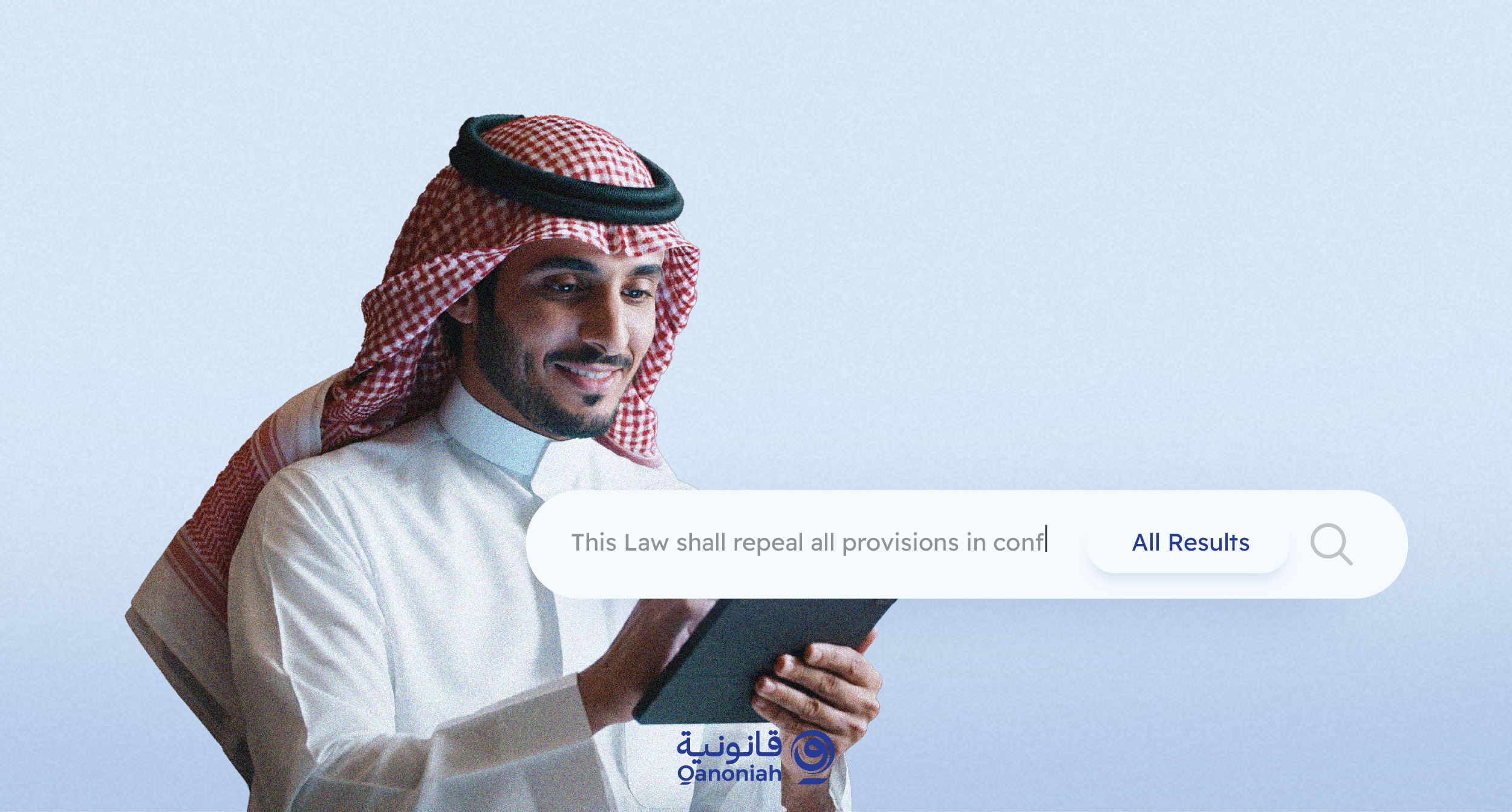The Role of Modern Technologies in Reducing the Issues of Implied Revocation

Omar Bazmool
November 10, 2025
Reviewed by
Dana Alomari
About the Author

Omar Bazmool
Legal specialist and Director of Legal Content at Qanooniyah, interested in legislative drafting and legal technology, and leveraging AI to build knowledge-based legal solutions.
In many legal systems, a recurring phrase is often included stating: "This regulation repeals all provisions that conflict with it."
This formulation is typically resorted to when it is difficult for the legislator to specify all existing regulations or decisions that need to be repealed especially in a dense legislative environment like ours, where multiple regulatory bodies exist and jurisdictions frequently overlap.
Revocation Mechanisms in the Saudi Legal System
The legal framework in the Kingdom of Saudi Arabia reveals three distinct mechanisms for repealing regulations:
1. Implied Revocation (the default approach):
This relies on a general phrase such as: "This regulation repeals all provisions that conflict with it."
2. Explicit Revocation (the exception):
This clearly states the replacement of a previous regulation, using language like: "This regulation replaces the [previous] regulation issued by Royal Decree No. ..."
3. Combination of Both Methods:
This uses a compound formulation, for example: "This regulation replaces the [previous] regulation and repeals all provisions that conflict with it."

Main Challenges of Implied Revocation
One of the key challenges associated with implied revocation, as noted by Dr. Ayoub Al-Jarbou in his study "Revoking Regulations in the Kingdom," includes the following:
1. Uncertainty in Identifying Repealed Provisions:
The lack of specificity can confuse implementing authorities and obscure the legal position of those affected by the regulation.
2. Risk to Legal Certainty:
Vague or ambiguous wording leads to uncertainty for individuals and institutions, making it difficult to confidently determine rights and obligations based on clear legal texts.
The Role of Legal Technologies in Addressing These Challenges
Modern legal technologies play a significant role in reducing reliance on implied revocation. One example is specialized platforms such as "Qanoniah" legal platform, which offers clearer and more precise tools that help minimize the issues associated with implied revocation. This is achieved through:
1. Precise Textual Search
Enables the review of all occurrences of legal terms across various domains, giving regulatory bodies a comprehensive view to detect potential conflicts. This supports well-informed decisions on partial repeals of articles or chapters when necessary.
2. Subject-Based Search by Regulatory Scope:
Allows for the identification of topics covered by the new regulation and helps pinpoint any existing provisions that may conflict with them. This facilitates informed decisions on fully repealing outdated or overlapping regulations.
3. Artificial Intelligence Technologies
These tools offer advanced capabilities in aggregation, organization, and analysis, providing regulators with a detailed and integrated perspective—delivered with greater efficiency and reliability than traditional methods.

Moving Towards a Balanced Approach: Specified Revocation as Much as Possible
While completely replacing implied revocation with explicit revocation may be difficult, a middle position can be adopted: specifying the revocation as clearly as possible by partially listing the provisions to be repealed and defining the extent of the revocation whenever feasible. This method achieves a balance between drafting flexibility and clarity in enforcement.
Conclusion
In a dense legislative environment, it is not enough for a law to simply be written it must be clear, consistent, and enforceable with confidence. The presence of these legal technologies enables authorities to gain a comprehensive view of relevant legislative areas, which enhances the efficiency of “legislative” expenditure and helps reinforce the principle of legal certainty by reducing overlaps and ambiguities in the texts.
Try Qanoniah for free now.
🔗 Related Files


.webp)
.png)
.webp)
